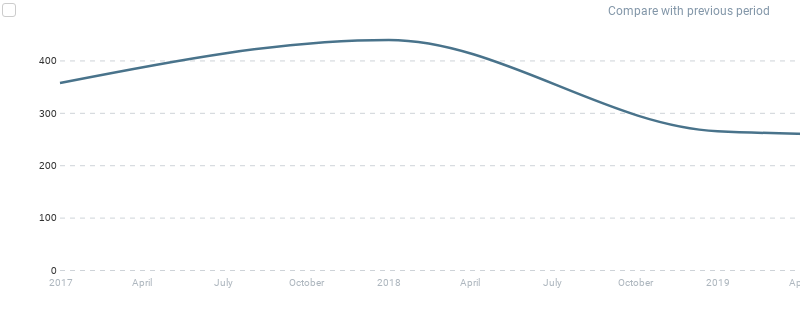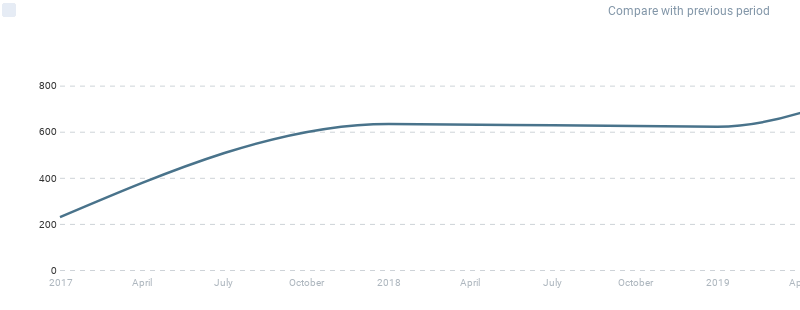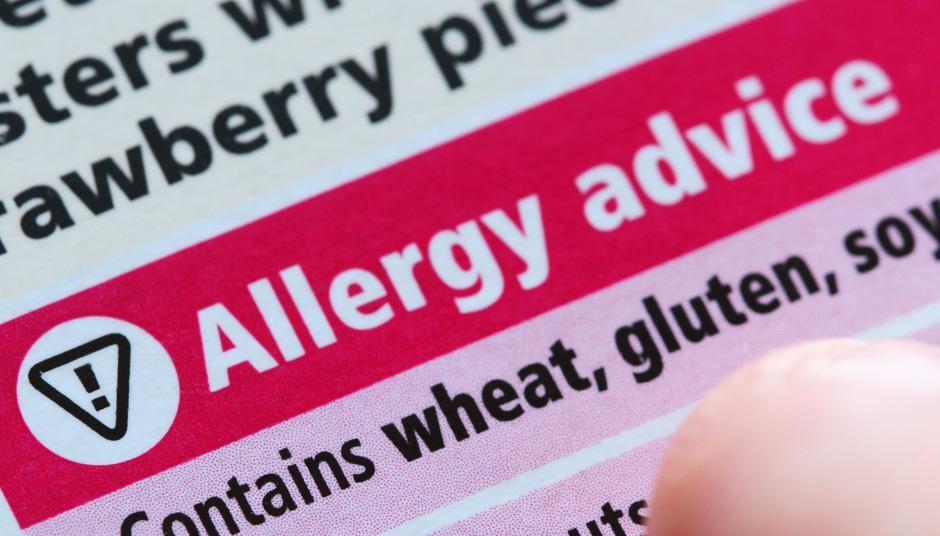From 2017 to 2020, there was a total of 1,010 United States Food and Drug Administration (US FDA) recalls, 36% of which involved private brands.

(Image 1: number of mentions for Food Incidents classified as "Recalls" from FDA - Source: SGS DIGICOMPLY)
Since 2017, undeclared allergens have been the leading cause of US FDA recalls, with Listeria monocytogenes and Salmonella spp. recalls on the rise. 62% of US FDA recalls were categorized as Class I and 11% of recalls were not classified.
RASFF, the Rapid Alert System for Food and Feed, is the EU’s tool for ensuring the flow of information to enable swift reaction when risks to public health are detected. It enables information to be shared efficiently between its members. RASFF collates information on faulty labeling, and processing or storage conditions, among other types of criteria which are monitored by the official member states controls.
Typically, most incidents reported under this type of criteria would relate to labeling mistakes which lead to undeclared allergens. For example, several notifications about products with undeclared allergens can be traced back to the same labeling defect. As per the latest (2020) annual report, reasons for recall are classified per frequency as:
1. Toxins, alkaloids, chemicals
2. Unauthorized substances
3. Salmonella
4. Undeclared ingredients
5. Foreign bodies
The three most frequently notified hazard categories in RASFF’s “other hazard categories” are:
1. Food additives and flavorings (32 notifications)
2. Labeling absent/incomplete/incorrect (28 notifications)
3. Poor or insufficient controls (23 notifications)

Image 2 number of mentions for Food Incidents classified as "Recalls" from RASFF - Source: SGS DIGICOMPLY)
Image 3: Sources of Food Incidents from RASFF - Source: SGS DIGICOMPLY)
Food product mislabeling can be a serious problem for consumers with allergies. Undeclared allergens constitute a high health risk for consumers that suffer certain food allergies. For example, in 2021 a company that makes poultry meatballs and pork patties neglected to list egg, milk, and wheat – all common food allergens – on product labels, resulting in a food recall by the USDA FSIS. Recalls of this type prevent people with food allergies, who rely on ingredient lists to protect themselves, from getting sick. For example, if a consumer has an allergy to wheat, unknowingly consuming even a modest amount of the grain could cause either mild symptoms, such as hives, or might induce a severe allergic reaction in the form of anaphylaxis, which can cause fainting, breathing difficulties, loss of consciousness, and other symptoms.
The declaration of allergens is a complex matter and there are many points to consider when it comes to each product’s labeling information. As a first step it is essential to examine all the ingredients in a product and consider whether they might be a direct or indirect allergenic source. For example, lactose which originates from milk, needs to be declared as an allergen per EU FIC legislation.
It is common in a composition to need to identify additives or composed ingredients. When these components are listed among the ingredients of a food product a thorough examination of their source is necessary. Lecithins that originate from soy are often used as emulsifiers, which are considered as additives in foods, while a composed ingredient such as breadcrumbs contains wheat. In addition to the ingredient examination aspect of an allergens assessment the food production process must also be considered.
Foods from the same production line, but with different composition, might bring issues of cross contamination. When this is the case, and where allergens which are not part of the composition may be detected in a final product, the risk of allergy remains. It is therefore necessary to protect consumers with a labeling warning that the product “may contains nuts” for example, or that the product is produced “on same line as other products which contain nuts.”
SGS is committed to keeping you informed of regulation news and developments. Leveraging our global network of laboratories and food experts, we provide a comprehensive range of food safety and quality solutions, including analytical tests, audits, certifications, inspections, label reviews and technical support. We continually invest in our testing, capability, and state-of-the art technology to help you reduce risk, improve food safety and quality.
A global perspective from SGS DIGICOMPLY
Within SGS DIGICOMPLY, we have the chance to compare the above data with a broader view, analysing all aspects of food recalls in the period 2017-2021, in the United States and European Union.
United States
In the period 2017-2021, there are 2479 recalls, of which more than 700 are related to labelling issues. Of these, many refer to undeclared allergens (in Digicomply they are classified as hazard = allergens). More than 100 incidents are connected to food additives or undeclared flavouring, and incidents connected to absent, incomplete or incorrect labelling.
EUROPEAN UNION
In the EU, in the same time frame, there were 240 recalls connected to labelling. Also in this case, the majority is about non declared allergens, but there are also incidents related to food additives mislabelling , or flavouring, and to absent, incomplete or incorrect labelling.
More information can be collected directly in SGS DIGICOMPLY (needs at least a PRO license), here are two sample filters connected to the above data:
- USA Data
For more information on label reviews, please visit SGS website: www.sgs.com/foodlabelreviews.
About the author:
Alexandra Dedeilia
SGS Business Manager
Phone: +30 210 5720777




.webp?width=1644&height=1254&name=Food%20Safety%20Dashboard%201%20(1).webp)
